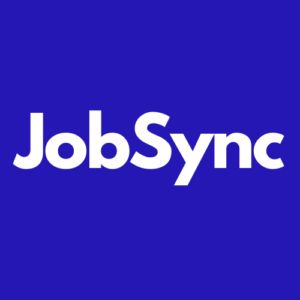
Candidate experience is a hot topic and has been for a while now. Most companies are finally beginning to realize that candidates, having many choices of where to work with 1.75 jobs available for every worker in the marketplace, increasingly expect their digital experience when applying to a job to mirror their shopping experience on Amazon. This is particularly true in the skilled and hourly space, an area unaffected by the recent rash of tech layoffs.
However, most companies aren’t getting it right, yet. The reason companies like Amazon have been so successful at gaining and keeping customers is not just the ease of browsing, shopping, and completing an order. It’s the quick and seamless follow-through to delivery that seals the deal.
I can place an order on Amazon right now for hockey tape for my son, and that order will be on my rural Vermont front porch in two days. Not only is it easy for me to order, the follow-through on that order is quick, easy, reliable, and delivered accurately (with a tracking app and updates if something goes awry).
And, I trust that this will happen every single time I order – and it does.
I don’t work for Amazon, nor do I have any special insider information, but Amazon isn’t the only company getting it right. Companies like Netflix have figured this out, too. If I order a movie on Sunday afternoon via Netflix, I immediately get a message on my television screen or computer thanking me for my order and the movie starts. I don’t have to wait three days for someone to email me and ask me to sign into my account to start my movie-going experience.
Why? Because Netflix, Amazon, and other successful companies have automated, unintegrated internal systems that make the experience seamless. When I place my hockey tape order on Amazon, it goes through a back-end that is completely automated all the way to the employee (or robot) in the warehouse who packs the tape. It doesn’t go into an email where someone has to manually upload my order into an Excel spreadsheet which then has to be walked down to the warehouse floor. In fact, there are connected systems all the way until the Amazon, UPS, or USPS driver brings the package to my front porch.
Candidate expectations and recruiter chaos
Companies often make the mistake of sacrificing operational necessities in the name of the ‘one-click buy’ experience. While it’s true that many companies ask too much up front (social security numbers, three references, current manager’s phone number), slashing the size of the application without thinking through how the recruiting team will prioritize and respond back to candidates can lead to chaos.
There are three missing ingredients that lead organizations to miss the mark on candidate experience. First, the platforms that offer Easy Apply processes have designed the process to capture as little data as possible, which often fails to capture the minimum work requirements to do the work, making the recruiter’s job that much harder. Second, while the data captured is consistent, it fails to account for the multitude of ATS systems and their baseline data requirements to create a candidate record, which means companies aren’t getting the data into the ATS, the place where they need the candidate information to live. And last, the HR technology stack and the data requirements of each ATS that organizations use are varied and most do not talk effectively to each other. So, unlike Amazon or Netflix, recruiting is forced to fill the gaps in their systems with manual processes that demand the individual recruiter’s time and are at best inefficient and at worst non-compliant with EEO or OFCCP requirements, putting the organization at risk.
When companies go down the path of ‘improved candidate experience’ through the myopic lens of making the application as short as humanly possible, it plays out something like this:
Step 1: Candidate searches for a job on a job board and completes a short/easy/zip application with a minimum of details, that is delivered to a company email inbox.
Step 2: The recruiter periodically checks that email.
Step 3: The recruiter manually attempts to either collect the candidate’s missing information, which is often incomplete or masked (some job boards insert their own email address, some job boards allow candidates to use only their first name, etc.) or the recruiter asks the candidate to go to the career site and complete the entirety of the application.
Step 4: The candidate gets (sees) the email and goes to the career site and re-applies for the job, including manually re-entering information already provided. (About 15% will do this.)
I am exhausted just typing this.
It’s pretty obvious why there is a 95% candidate abandonment rate. A rate that climbs every year.
Makes you wonder why recruiters aren’t abandoning their jobs at the same rate (some are, but let’s leave that for another day).
So, unlike the hockey tape order that arrived complete and perfect on my front doorstep from Amazon; the candidate’s arrival is less than perfect. The application they thought they already completed must actually be completed again in the ATS, while the recruiter scrambles to piece together the incomplete information they have, manually upload it into their system of record, and reach back out to a candidate who has applied to 50 other jobs in addition to yours.
All of this creates insurmountable amounts of work for your recruiter, delays responses to candidates, and makes the entire process slow and disjointed.
How do we actually Amazonify recruiting?
The answer is that the tech stack needs to be fully integrated with the various tools a recruiter touches every day. And all of the systems candidates touch need to talk to each other. There is no CRM, ATS, chatbot, or text messaging solution that is going to be able to solve every challenge your organization faces. You may need, depending on your organization’s particular set of demands, 3, 4, or 7 different technologies to get the right setup for your recruiting team to successfully fill all of your open jobs on a regular basis. What you must do as an organization is eliminate all of the manual processes you are using to fill the gaps and integrate those technologies to work together automatically.
That’s where JobSync can help.
Understand that getting all of these technologies to talk to each other is a very customized and bespoke process that requires expertise and time. There is no plug-and-play solution to get the job boards to talk to your ATS and then automate other processes in your stack. Anyone who tells you there is a one-size-fits-all, simple solution is either deluded or trying to sell you something you will soon regret buying.
When clients invest time with us, the results are worth the wait. Unlike some of the other solutions out there that promise to help you pick up the pennies of paying a few cents less for CPC or increase your candidate apply completion rate by a few percentage points; when you integrate your complete application from the job board all the way through your ATS and other internal systems, the results are immediate. JobSync’s clients watch the CPA (cost per application) slashed by half, and the application rates are consistently 2, 3, 4, and even 5x what they were prior to integration. And, as importantly, the 6-12 hours a week recruiters are currently spending on administrative tasks like populating their ATS with easy-apply candidate data or uploading excel spreadsheets, are eliminated, giving them back that time to get back to solving the business problem of hiring the right candidates as quickly as possible.
If you’re ready to explore how this might work at your organization, check out our white paper on the Amazonification of Recruiting and if you are interested in how we might help your team specifically with a customized solution that will get that hockey tape delivered on time, reach out here!


